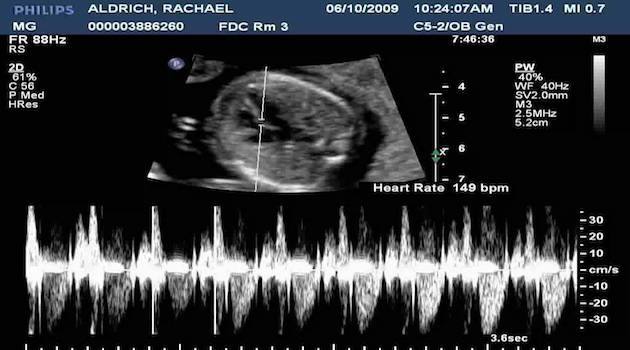NY Times dehumanizes unborn baby heartbeat

When is a heartbeat not a heartbeat? Apparently not when it’s beating in an unborn child according to the New York Times.
The liberal newspaper has single-handedly changed biological science in its new “report” about pro-life heartbeat laws.
On Wednesday, the newspaper described the Louisiana heartbeat law with bizarre new language that dehumanizes unborn babies and ignores decades of scientific evidence.
Rather than say the word “heartbeat,” the New York Times used the words “the pulsing of what becomes the fetus’s heart.” It also described the legislation as a “so-called fetal heartbeat bill” – as if it is questionable whether the unborn baby actually has a heart or a heartbeat.
The anti-scientific language did not end there. In its description of the Louisiana law, the New York Times wrote:
“The measure would require an ultrasound test for any woman seeking to terminate a pregnancy, and forbid abortion if the test detects embryonic pulsing – which can occur before many women know they are pregnant.”
This new terminology is not based on facts or scientific evidence. It’s based on an agenda that supports abortion on demand. “Embryonic pulsing,” for example, is such a vague description that it is hard to understand precisely what it means. And it appears to have been used that way on purpose.
It disguises the truth and attempts to manipulate the public into believing something different from what they know to be true. Whether you ask an average mother on the street or scientists at the most prestigious universities in the world, they will tell you that an unborn baby has a heartbeat from their earliest stage of life.
In 2016, researchers at the University of Oxford published an amazing new study about how early a human being’s heartbeat begins. They found that the heartbeat may begin earlier than initially thought, as soon as 21 days of pregnancy.
The language that the world-renowned scientists used did not mention “embryonic pulsing” or “so-called.” They used words like “heartbeat,” “human embryo” and “heart muscle.”
“First of our three billion heartbeats is sooner than we thought,” the university wrote in its news release about the research.
Later, it noted, “The heart is the first organ to form during pregnancy and is critical in providing oxygen and nutrients to the developing embryo.”
Oxford is just one of many, many sources for this information. Baby websites, doctors, scientific research – even TV shows – and more all acknowledge what millions of mothers know to be true, women who saw or heard it soon after that first positive pregnancy test, the heartbeat of a tiny, living unborn child.
These resources, unlike the New York Times’ new spin, are scientific, specific and accurate. They make it clear that an unborn baby has a heart within the first few weeks of his/her development. Though the heart is not fully developed, it is there and it is beating.
This scientific evidence also implicitly acknowledges the value and humanity of an unborn baby at their earliest stage of development. And that is the real problem for abortion activists. It’s hard to push an agenda that advocates for the killing of a unique, living human being with a heartbeat – one that their mothers now can see and hear, thanks to modern technology.
But the New York Times is known as the newspaper of record in America – the source widely accepted to be accurate and true. And other news outlets, including the Daily Beast, are starting to mirror its dehumanizing language as the abortion debate continues to boil.







